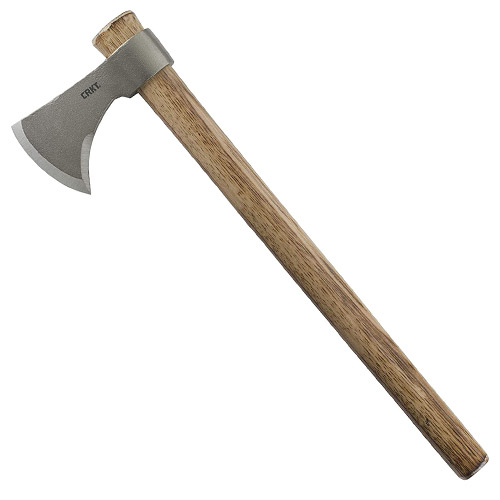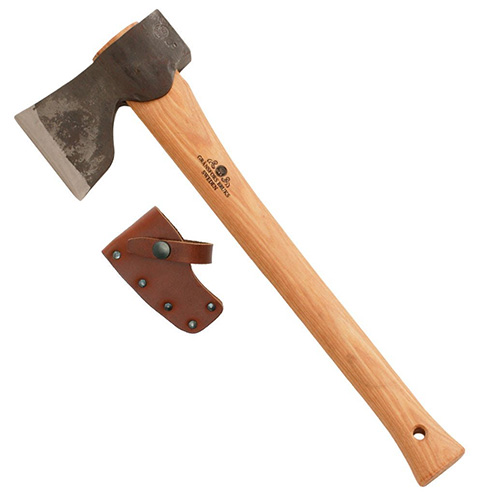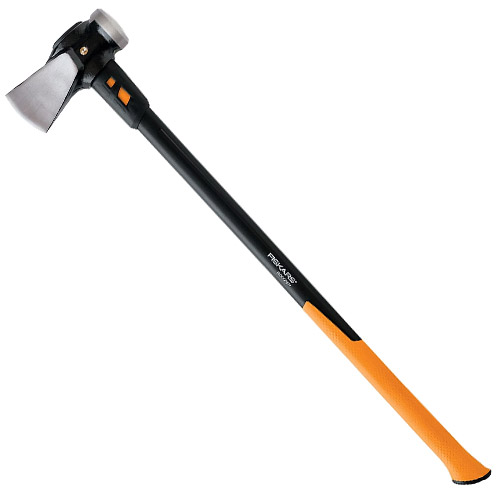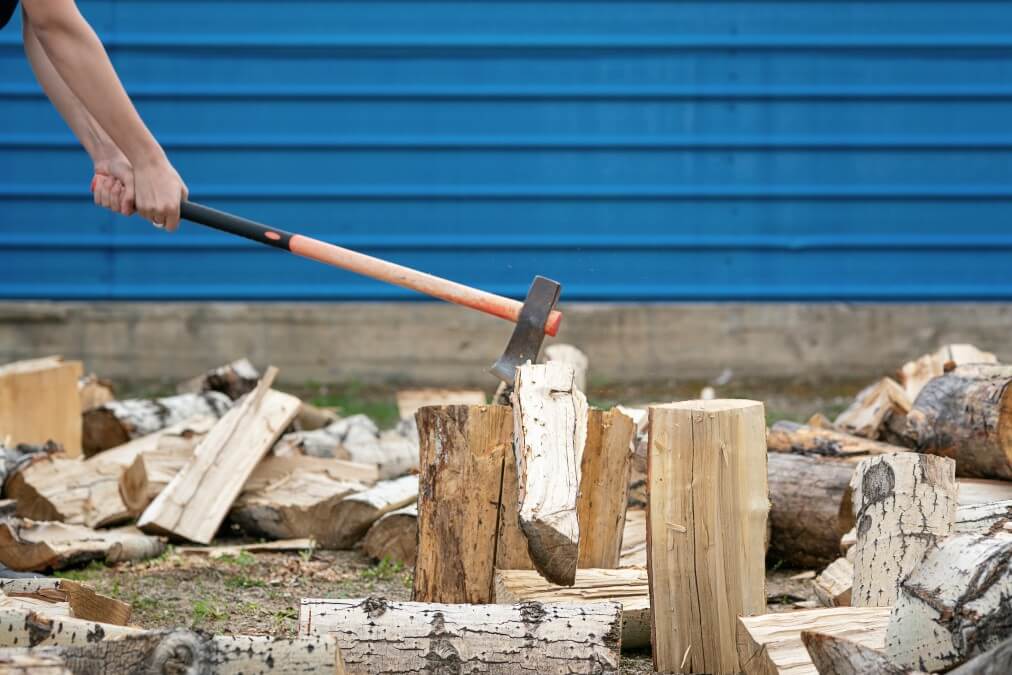Are you starting woodworking as a hobby and need an axe for carving? Do you need an axe for chopping down a tree?
It’s not practical to buy any old axe and use it for anything and everything. Also, axes aren’t all made the same way. Finding the right axe for you is going to involve a small equation, but don’t worry, it’s easy to figure out.
The first thing you need to look for is the right axe for the job you’re doing. But after you’ve narrowed down the type and size you’ll need, the equation moves into finding the perfect combination of blade and handle quality. Keep reading to learn more about choosing the best axe for you.

Choosing The Right Type Of Axe
Before getting into size and quality, the most important question you need to ask yourself before choosing an axe is what you plan to do with it in the first place. Are you cutting a tree? Are you looking to go into wood carving or axe throwing?
There are multiple different types of axes, all made for specific purposes like tree cutting, splitting kindling and firewood, and other uses as well. There are hundreds of different axe models, from practical to tactical, and even some made simply for decoration. Let’s talk about some of the different types of axes.
Hatchet or Camping Axe
Hatchets and camping axes are made for splitting firewood and kindling while hiking or camping and clearing any small brush to clear a trail.
WilFiks Chopping Axe

Features:
- Wood Chopping Axe is designed for easy chopping Of Firewood, Logs, Kindling and Branches
- The Forged Carbon Steel Heat Treated blade which improves its density and makes the axe more durable produces smooth, sharp, and quick splits
- Hatched is Designed with a Shock Absorbing Anti Slip Grip
Tomahawk
Used originally for war, tomahawks were a tool used by Indigenous peoples for hand-to-hand combat. Nowadays, they’re used for competitive axe-throwing or clearing minimal brush. They have a shorter blade to create more “punch” in their strike.
CRKT Woods Tomahawk Axe

Features:
- 1055 Carbon steel provides durability and edge retention
- Beard on axe head tackles many useful cutting tasks
- Tennessee hickory is a dense material that withstands hard use
Carpenter’s Axe
Carpenter’s axes are another small axe that is used in carpentry and woodworking to carve or cut logs. They’re similar in size to the hatchet and some have a hardened poll so that the axe can be also used as a hammer
Gransfors Bruks Carpenter's Axe

Features:
- Drake Off Road Tools Functions like a good heavy knife
- The axe poll is ground and can be used as a hammer
- 3-1/2" face, 18" handle, 20 Year Product Warranty
Roofer’s Axe
The roofer’s axe is a very versatile little tool of the trade. It seamlessly slides under shingles to lift them or cut through roofing nails to remove old shingles. There’s a small notch on the bottom of the axe blade and a hammer on the other side of the blade to nail a new shingle in.
Forestry Axe
As the name suggests, forestry axes are used to chop down smaller trees and medium-sized logs. The blades are thick and sharp to cut into the wood with ease. The heavy-duty axes are very strong, being able to cut wood against the grain, instead of splitting it.
Gransfors Bruks Small Forest Axe

Features:
- Length with handle: 19 inch, Comes original Gransfors "Axe-book"
- Sheath in vegetable tanned leather
- Perfect for splitting small sticks or cutting limbwood
Splitting Axees and Mauls
Splitting axes are the biggest of the axes, being used for splitting large logs and felling trees. These blades are thinner than chopping axes, for example, allowing to cut through larger pieces of wood. Mauls are a type of splitting axe with a narrower blade. Like the splitting axe, a maul is best used to split wooden longs by forcing the fibers of wood apart.
Fiskars IsoCore Maul

Features:
- Ideal for splitting wood (splitting face) or driving wedges and stakes (driving face)
- Optimized blade geometry offers better penetration and blasts tough logs apart
- Inseparable riveted head will not slide down or snap off, even when swinging with maximum force
Picking The Right Axe Size and Weight
Choosing an axe that’s not too heavy for you to lift or swing multiple times. You want to have enough distance, but not too long of a handle that it is unmanageable. Depending on the use case, it’s always best to start off using a smaller axe and work up to a bigger one.
Remember that the different types of axes will be differently sized. For example, a tomahawk axe can be approximately 12-15 inches and weigh up to 2 pounds. But a maul will be up to 40 inches and weigh up to 8 pounds.
While many axes have separate uses, there are ways you can have a lighter axe that is still heavy duty. Some medium-sized axes can d the work of a larger axe, but it can time more time and effort for some projects. Plus, using a lighter axe also means you’ll have to swing it more on a thicker piece of wood.

Picking The Best Axe Blade
Every type of axe has a different-sized head, which makes up for the bulk of an axe’s weight. Many axe blades have a unique head shape. For instance, the wide blade of the chopping axe differs from that of the splitting axe because even though they generally do the same thing by cutting logs and trees, it’s in a completely different way.
For tougher jobs and for instances where you might need to drive a wedge into the wood, for example, you will need a hardened axe blade that is tough enough to be versatile like that. Axe blades are made from two types of steel:
Finding The Right Axe Handle
The next part of finding the right axe is to find the right axe handle for you. There are a few options, including plastic, but plastic is unreliable at best, and prone to breaking, so it’s best to avoid altogether. Striking that from the list, you’re left with two very good options for choosing the best axe handle, but very different.
Fiberglass is a lightweight material that is good for portability and if you’re looking for a lighter axe for your projects. Many fiberglass handles also come with grips for better handling.
Wood is the classic option. Most don’t come with grips, so it’s always best to use with a pair of gloves. While easier to replace, wooden handles are also more liable to break. But they are much less expensive.
Steel handles are made for sheer strength, being able to chop through ice. The problem with it is that there is no shock absorption, meaning the pressure from the axe hitting will radiate through your arms, which can cause injury over time.
Conclusion
Now that you know everything that goes into finding the right axe, you can go out and pick the best axe for you and whatever your project is. Whether you’re chopping, splitting, or woodworking, you can find an axe for it!
It’s recommended to go into a store and actually feel the way you handle an axe. You may not be able to do a swing test, but it’s a good way to tell whether it’s the right axe for you!

